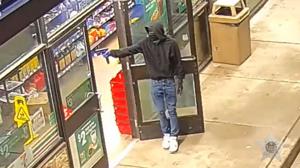
(The Center Square) – With robberies up by nearly 30% across the city compared to just 24 months ago, Chicago Ald. Chris Taliaferro said he wishes Mayor Brandon Johnson’s new plan for restoring law and order focused more on beefing up manpower across the police department.
“We’re down over 2,000 police officers and how can you deter crime when folks know that there’s not enough police officers out there,” Taliaferro, a former Chicago Police Department officer and current member of the city’s Public Safety Committee, told The Center Square. “We’re not putting the emphasis on policing and we’re letting police officers attrition out and not replacing them responsibly.”
With summer fast approaching, Johnson recently joined Police Superintendent Larry Snelling and other top city officials in detailing the department’s four-pronged attack for keeping residents safe from such crime, including deploying “focus missions” to prevent crimes and pursue suspects, continuing to use technology like license-plate readers and pod cameras, and increasing community engagement.
With some city neighborhoods seeing as much as a 155% spike in robberies that include smash-and-grabs and crews working together to target victims in repeat attacks where they jump out of stolen vehicles used as getaway cars, CPD will also be hosting so-called “Vehicle Safety Days,” where Hyundai and Kia car owners can obtain software updates that can help slow thefts of their vehicles.
While stressing that he sees some good in the mayor’s plan, Taliaferro said he sees making the necessary changes coming back to the same issue – boots on the ground.
“We have to take that step further and make sure that this summer we have an adequate number of officers on the street that could deter crime,” he said. “So it’s a comprehensive plan, I think that we need to look at policing as well as public engagement.”
Johnson also used the occasion to reinforce his long-term goal of trying to solve the root causes of crime through bringing opportunities and investment to underserved communities.
Given the crisis situation many feel the city now faces, Taliaferro stressed the need for immediate solutions.
“We’ve been looking at the root causes of crime for 50-60 years without seeing success, so it’s an unproven approach,” he said. “And then if you want to make those significant reductions in less than four years, it’s going to be almost impossible.”




